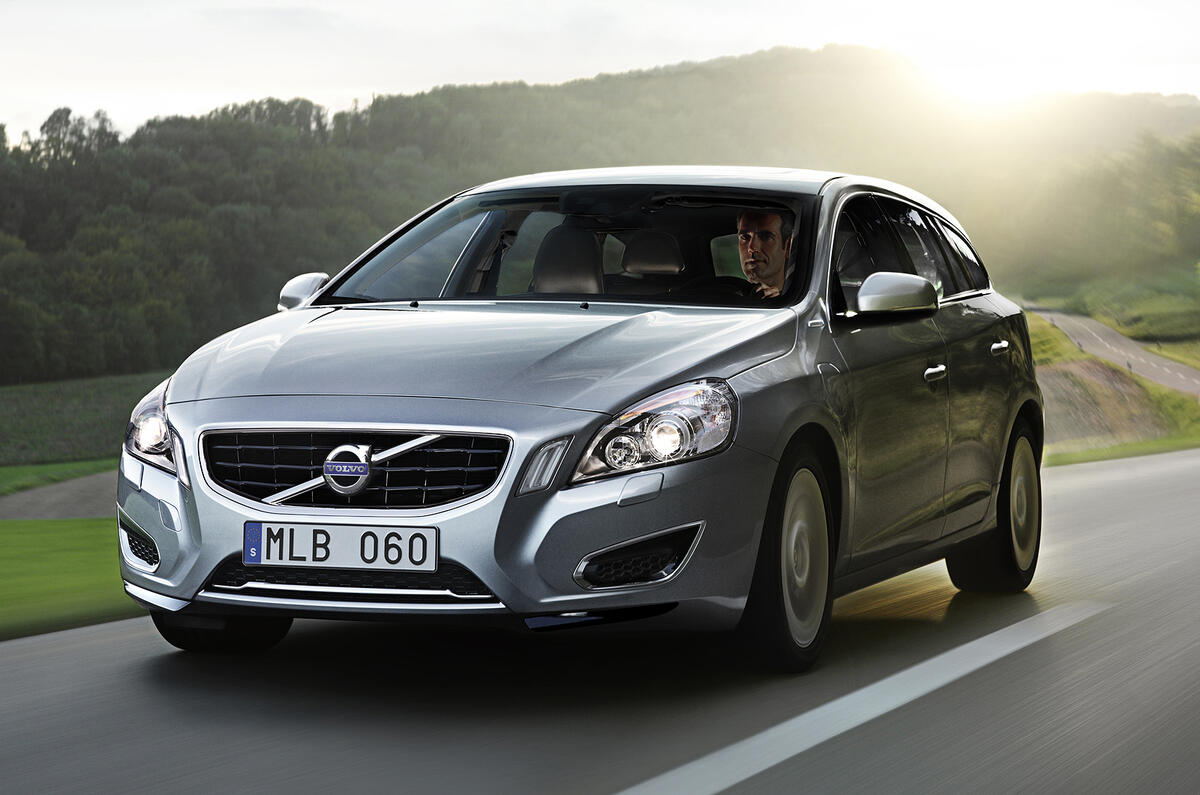Volvo’s new Volvo V60 plug-in diesel-electric hybrid will go on sale in the UK in the spring priced from £47,000. The model is the first car of its type and will qualify for the government’s £5000 electric car grant, bringing down the price to £42,000.
Volvo claims the V60 plug-in, which will be badged Volvo V60 D6, has CO2 emissions of just 49g/km, although no fuel economy figures have been quoted. The all-wheel drive D6’s front wheels are powered by a 212bhp, 324lb ft five-cylinder 2.4-litre turbodiesel engine mated to a six-speed automatic transmission.
See pictures of the Volvo V60 D6
The electric rear axle is powered by a 69bhp, 147lb ft electric motor, which in turn is powered by an 11.2kWh lithium-ion battery pack located under the boot’s floor. In the D6’s Pure driving mode (Hybrid and Power are the other two driving modes), the car has a theoretical electric-only range of up to 32 miles. Volvo claims this is enough to meet the needs of most European driver’s daily mileage. A driver can also select to save electric power for later in their journey by activating ‘Save’ mode.
Hybrid mode is the default-operating mode for the V60 D6. Volvo claims this mode best blends the hybrid system’s environmental and performance capabilities. It is in this mode where the 49g/km CO2 figure was recorded using the New European Driving Cycle (NEDC) standard tests. In Hybrid mode, Volvo quotes a theoretical range of 746 miles.
Power mode is designed to release the greatest performance from the hybrid drivetrain. Maximum power and torque is available from the engine and electric motor in Power mode, and Volvo quotes a 0-62mph time of 6.2sec.
Other features of the drivetrain include a selectable electrical all-wheel drive mode, which is claimed to be more economical than a permanent mechanical all-wheel drive system as it is only activated when a driver needs assistance in snow, mud or similar low-grip situations.
See pictures of the Volvo V60 D6
A two-stage braking system also features, which initially slows the car using the electric motor (the energy from which is used to recharge the battery pack) before the mechanical brakes kick in when extra braking is required.
A full recharge of the batteries takes between 3.5 hours and 7.5 hours depending on the amperage of the power source. While recharging, it is also possible to pre-heat or cool the cabin to prevent the car using unnecessary charge on these tasks when on the move. The battery can also be pre-conditioned to its optimum working temperature, too, thus maximising the electric-only range.














Add your comment